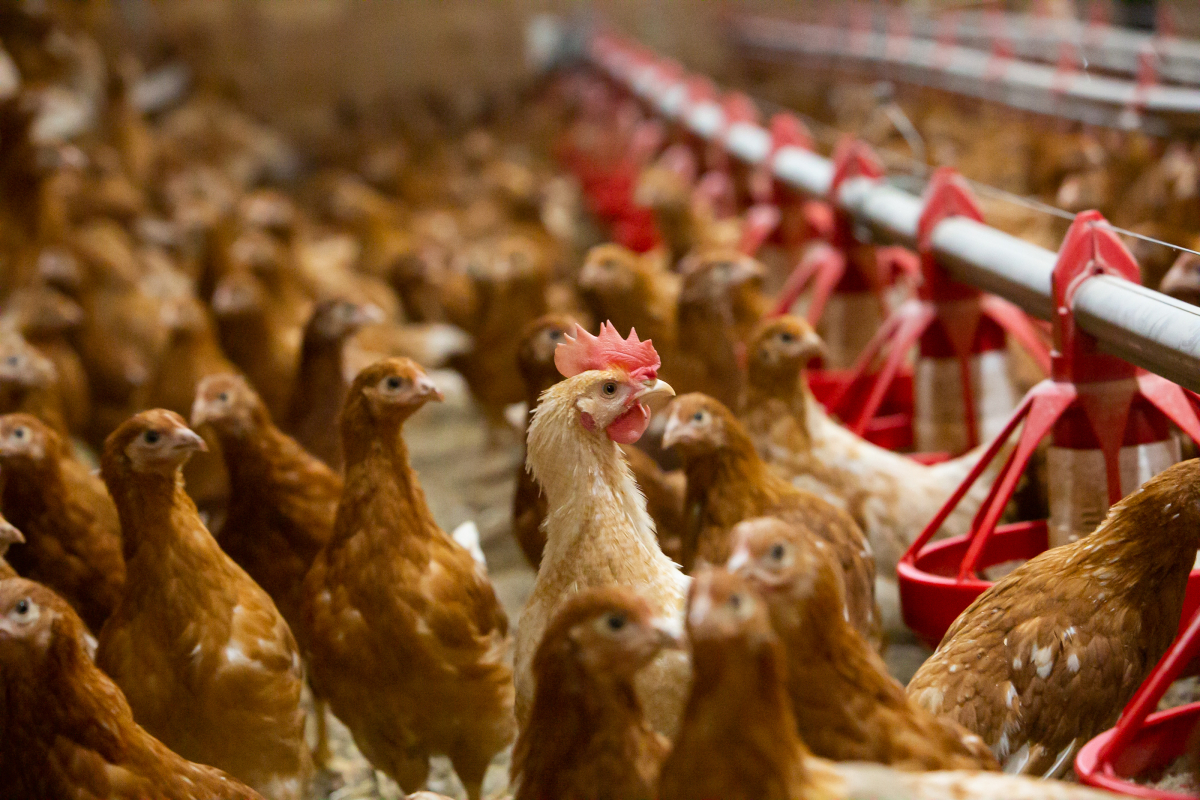Support strong Canadian climate journalism for 2025
For the past few weeks, Corry Spitters has been terrified that every wild goose or duck near his family's large organic chicken farms could infect his flock with a strain of avian influenza killing wild and domestic birds around the world.
"If I could draw a cartoon right now, we're all sitting at our (farm) perimeters with anti-aircraft artillery watching for any flyovers," joked the Abbotsford, B.C. farmer grimly.
First detected in Canada last year, the H5N1 virus has killed over 1.7 million of the country's domesticated fowl and wreaked havoc on poultry and egg farmers. Spread primarily by wild birds, the virus has a high mortality rate for domesticated flocks and infected farms are required to euthanize their flock and scour their barns to prevent the virus from spreading to other birds and potentially humans.
The disease is typically spread through direct contact between birds and outbreaks are often triggered when migrating birds mingle with domesticated flocks. It can also survive in mud or puddles and be carried into commercial barns on the bottom of unsanitized boots or equipment.
H5N1 can infect people, though only 883 people have been diagnosed with the virus since 1997, according to the Public Health Agency of Canada. That includes two people during the current outbreak: A Colorado man who got sick in April after euthanizing infected poultry and a septuagenarian British man who caught the disease from his backyard flock.
People cannot catch the virus by eating poultry or eggs. And Canada's poultry supply management system means that it is highly unlikely we will face a shortage of chicken or eggs since they can be sourced from other farms outside impacted areas.
For Spitters, the biggest danger is to his livelihood, not his health. And with up to three-quarters of a million birds spread across several barns in the Lower Mainland, he is doing everything he can to keep his flock from getting sick.
While he doesn't actually have sharpshooters posted around his chicken barns, his protective measures are intense. Doubling down on existing biosecurity measures, like disinfecting boots. Keeping his chickens indoors, even though they typically can go outside in covered pens. He showers and changes each time he leaves the farm and has stopped meeting other farmers to reduce the risk they could spread the virus.
He knows the cost of inaction first-hand. In 2004, an avian flu outbreak on his farm forced him to euthanize his flock and shut down his business for four months. When he restarted growing poultry after the forced vacation, it was with more caution and stricter industry-wide biosecurity measures.
The weak point, he said, are people with backyard chickens who may be less stringent about proper biosecurity, opening the door for their flocks to be more easily infected by wild birds. These "small flocks" make up about 37 per cent of infected flocks tracked by the Canadian Food Inspection Agency.
"This outbreak serves as a reminder to poultry producers to maintain strict biosecurity measures at all times to prevent the introduction and spread of diseases. This extends to small producers who may only have a few backyard birds. They should be changing their shoes and keeping their birds indoors as much as possible (because) an outbreak in a small flock … will affect the entire poultry industry," said Agriculture Minister Marie-Claude Bibeau in a statement last month.
But not everyone believes that hobby farmers with sloppy biosecurity practices are the root problem. Andrew deCoriolis is the executive director of Farm Forward, an American organization that advocates for reforms to animal farming aimed at making it more humane and sustainable.
"You need to look at what is uniquely dangerous about industrial animal farming techniques," he said.
Those factors include the "sheer volume" and density of poultry on most large chicken farms, as both elements help the virus spread. The industry's reliance on a handful of genetically similar poultry species (only three companies control the global market for commercial chicken genes) also reduces the ability to fight off avian flu and other viruses. The combination of those three factors on large-scale chicken farms — volume, density and genetic homogeneity — creates the "perfect" conditions for the virus to spread, replicate and mutate.
"It's an incredibly dangerous situation we've created," deCoriolis said.
Not only does the current system put stress on food supplies and farmers when millions of birds are culled, it also creates perfect environments for viruses to mutate, potentially becoming more virulent or transmissible. The best way to prevent these scenarios is to change how chickens are bred and raised. For example, reducing their density on farms, growing more diverse breeds, and allowing them to go outdoors in covered areas can help the birds stay healthy and resilient.
While some of deCoriolis's recommendations might appear to rub against biosecurity measures adopted by big poultry farms — notably locking the flock indoors — they can be reconciled. Many smaller, commercial chicken farmers who are practicing these principles on their farms have adapted biosecurity measures developed for larger farms to their needs, said Julia Smith, president of the B.C. Small-Scale Meat Producers Association.
Association members are taking the H5N1 outbreak "very seriously," she said. They're following strict cleaning procedures, sanitizing their boots and equipment, covering their flocks' open-air pens with nets and using wild bird deterrents to prevent the virus from circulating in their flocks. She added that provincial authorities have endorsed this approach.
Regardless of specific measures individual farmers are taking to protect their flocks, the past several weeks have been stressful. There is a chance the outbreak could abate during the summer but until — or if — that happens, Spitters will remain "on edge" alongside hundreds more Canadian farmers.






Comments